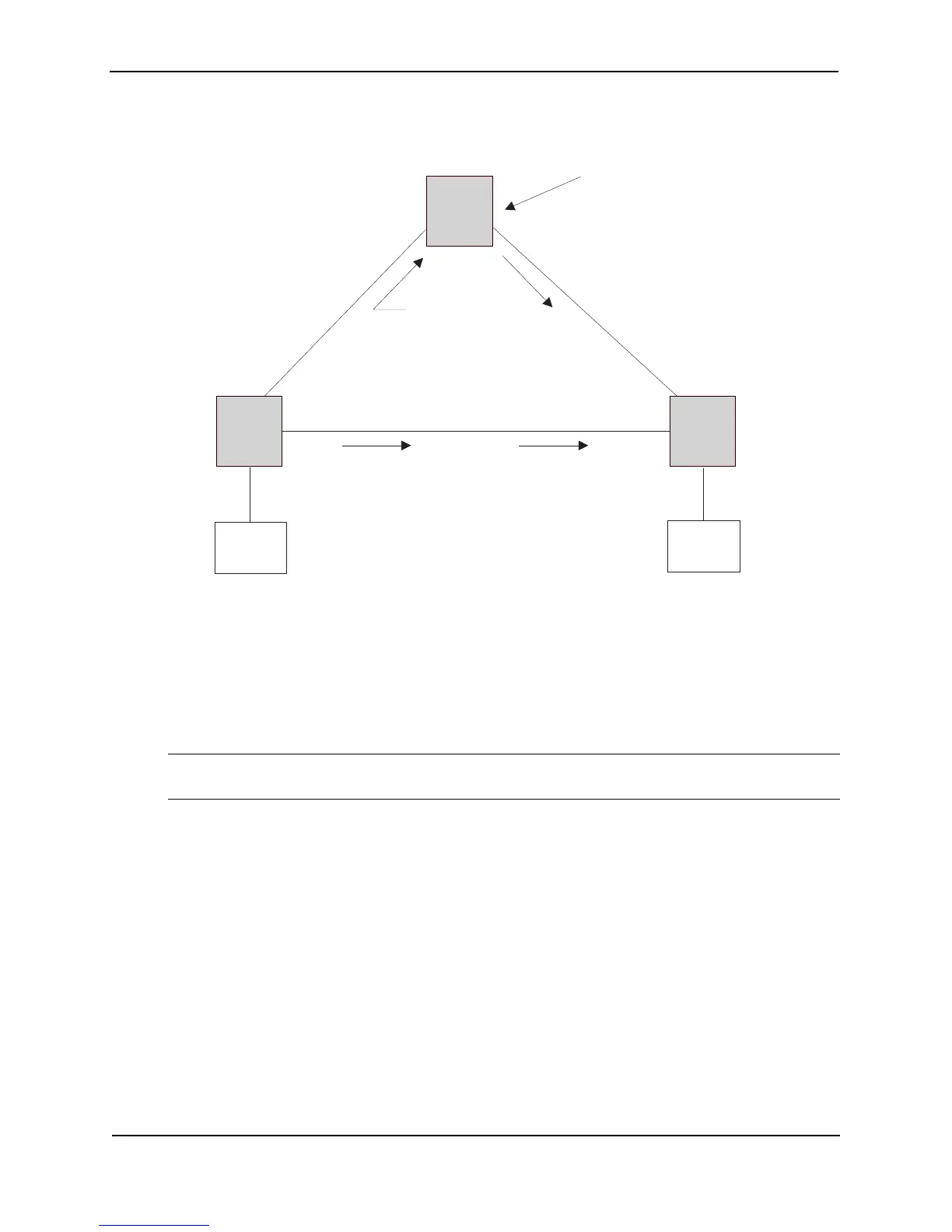Foundry Configuration Guide for the FESX, FSX, and FWSX
19 - 14 © Foundry Networks, Inc. December 2005
Figure 19.3 Example PIM Sparse domain
PIM Sparse Router Types
Routers that are configured with PIM Sparse interfaces also can be configured to fill one or more of the following
roles:
• PMBR – A PIM router that has some interfaces within the PIM domain and other interface outside the PIM
domain. PBMRs connect the PIM domain to the Internet.
NOTE: You cannot configure a Foundry routing interface as a PMBR interface for PIM Sparse in the current
software release.
• BSR – The Bootstrap Router (BSR) distributes RP information to the other PIM Sparse routers within the
domain. Each PIM Sparse domain has one active BSR. For redundancy, you can configure ports on multiple
routers as candidate BSRs. The PIM Sparse protocol uses an election process to select one of the candidate
BSRs as the BSR for the domain. The BSR with the highest BSR priority (a user-configurable parameter) is
elected. If the priorities result in a tie, then the candidate BSR interface with the highest IP address is elected.
In the example in Figure 19.3, PIM Sparse router B is the BSR. Port 2/2 is configured as a candidate BSR.
• RP – The RP is the meeting point for PIM Sparse sources and receivers. A PIM Sparse domain can have
multiple RPs, but each PIM Sparse multicast group address can have only one active RP. PIM Sparse routers
learn the addresses of RPs and the groups for which they are responsible from messages that the BSR sends
to each of the PIM Sparse routers. In the example in Figure 19.3, PIM Sparse router B is the RP. Port 2/2 is
configured as a candidate Rendezvous Point (RP).
To enhance overall network performance, Foundry Layer 3 Switches use the RP to forward only the first
packet from a group source to the group’s receivers. After the first packet, the Layer 3 Switch calculates the
shortest path between the receiver and source (the Shortest Path Tree, or SPT) and uses the SPT for
subsequent packets from the source to the receiver. The Layer 3 Switch calculates a separate SPT for each
source-receiver pair.
Receiver for Group
239.255.162.1
VE 1
207.95.6.1
Shortest Path Tree (SPT) path
209.157.24.162
Port 3/8
207.95.7.2
Rendezvous Point (RP) path
VE 1
207.95.6.2
This interface is also the
Bootstrap Router (BR) for
this PIM Sparse domain, and
the Rendezvous Point (RP) for the
PIM Sparse groups in this domain.
Port 3/8
207.95.8.1
Port 2/1
207.95.8.10
Port 2/2
207.95.7.1
Source for Group
239.255.162.1
PIM Sparse
Router B
PIM Sparse
Router C
PIM Sparse
Router A
